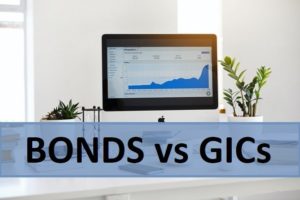Understanding the Importance of the Debt-to-Market-Cap Ratio in Stock Analysis

When evaluating stocks, it’s crucial to assess their resilience during economic downturns and their potential for future prosperity. While the commonly used debt/equity ratio offers insights into a company’s financial leverage, it fails to capture certain nuances. In this article, we explore the significance of the debt-to-market-cap ratio in stock analysis and why it surpasses the debt/equity ratio.
By understanding the intricacies of this approach, investors can make more informed decisions and increase their chances of identifying companies poised for long-term success.
I was recently asked why I use debt-to-market-cap in my analyses, which is different from the debt/equity ratio seen in most other reports. My answer is two-fold. In analyzing a stock, you need to form an idea of how much it would get hurt in a recession. To put it another way, how likely it is to survive a business slump and go on to prosper when good times return? To do that, you need to look at a number of factors. These include the interest rate on its debt, how sensitive it is to the economic cycle, its pluses and minuses in relation to competitors, its vulnerability to adverse legal and regulatory decisions, its credit history and current credit rating … and so on.
Analyzing Debt-to-Equity Ratio
Many successful investors start by looking at the debt/equity ratio. This ratio comes in several variations, but the basic idea is that you measure a company’s financial leverage by comparing its debt with its shareholders’ equity. You assume an attractive company can earn a higher return on its total capital than the interest rate it pays on the debt portion of its capital. If so, the excess goes to shareholders’ equity, raising the total return to shareholders.
But leverage works both ways. If the total return falls short of the interest costs, the difference comes out of shareholders’ equity. When a company loses money, it still has to pay the interest and one day settle the debt. Generally, it does so by dipping into shareholders’ equity. In extreme cases, losses wipe out shareholders’ equity, and the stock becomes worthless. Then bondholders and lenders take over the assets to try to get back their investment. A high ratio of debt to equity increases the risk that the company (that is, the shareholders’ equity in the company) won’t survive a business slump.
However, this ratio can mislead because it compares a hard number with a soft one. Debt is usually a hard number. Bonds and other loans generally come with fixed interest rates, fixed terms of repayment and so on. Equity numbers are softer or ‘‘fuzzier.’’ They mostly reflect asset values as they appear on the balance sheet (minus debt, of course). But the balance-sheet figures may be misleading. They may be too high, if the company’s assets have shrunk in value since the company acquired them (that is, lost more value than the company’s accounting shows). In that case, the company may need to correct its balance sheet figures by cutting them or “taking a writedown.”
Or the equity value may be too low if the company’s assets have gained value since the company acquired them. This can happen with real estate, patents and other assets (which we refer to as “hidden assets”).Much of a company’s real value may rest in its “goodwill” — its brands, or the reputation and relationship it has built with customers over the years. This value would only appear on the balance sheet if it was bought rather than built up by the company’s operations.
Analyzing Debt-to-Market-Cap
Efficient market theory also leads us to favour debt-to-market-cap over debt-to-equity. This theory says that it’s impossible to beat the market, because the market is efficient and eventually reflects all information, good or bad. This idea had a lot to do with the creation of index funds. Market cap — the value of all shares the company has outstanding — benefits from the “wisdom of crowds.” Continue Reading…






